Try to do these problems without a calculator….
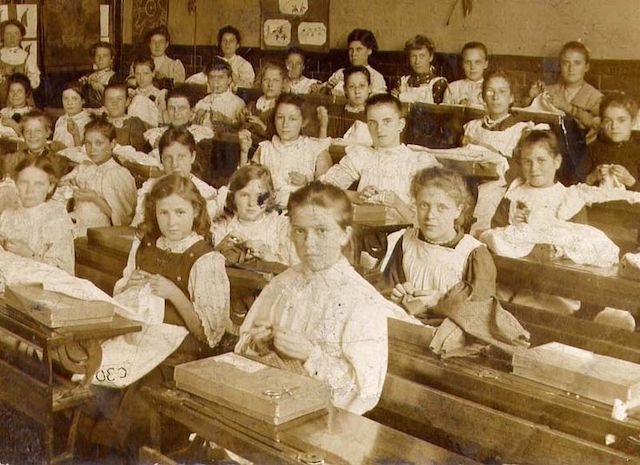 On November 22, 1889, Gertrude Jones of Tennyson, Indiana penciled her name into her copy of Complete Arithmetic, a math curriculum book in use at the time. In 2016, the book is now in my possession. It smells delightful, if you’re into old books.
On November 22, 1889, Gertrude Jones of Tennyson, Indiana penciled her name into her copy of Complete Arithmetic, a math curriculum book in use at the time. In 2016, the book is now in my possession. It smells delightful, if you’re into old books.
 Below is Gertrude’s lovely cursive:
Below is Gertrude’s lovely cursive:
 Complete Arithmetic’s introduction describes the use of the book as follows:
Complete Arithmetic’s introduction describes the use of the book as follows:
“In the preparation of the Complete Arithmetic, practical or business methods have received unusual attention. Those portions designed to qualify pupils for the actual business of life are amply treated and made clear. Principles have been fully illustrated by abundant exercises and problems, while difficult questions, without principle or purpose, are omitted altogether.
…
…The Elementary and Complete Arithmetics have been built on the theory that the average pupil, under the guidance of an intelligent teacher, is able to master the principles of business arithmetic, and that growth in mathematical knowledge does not come from aimless repetition so much as from the gradual and thorough mastery of new subjects. The mind, like the body, demands nutritious and readily assimilated food.”
It’s not clear from the book how old Gertrude would have been when she was learning the materials. The book does go from basic arithmetic to “mensuration” or geometry, with a heavy emphasis on business or finance math.
With that understood, below are some examples of how financial acumen was taught through math in 1889. Remember, too, that the kids in 1889 didn’t have a calculator. Try to do the problems like they would have…
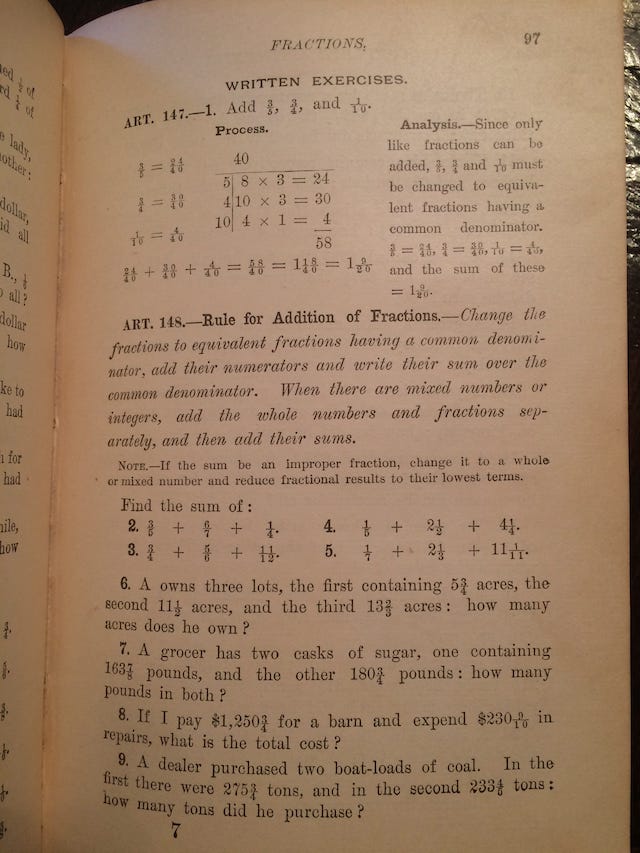
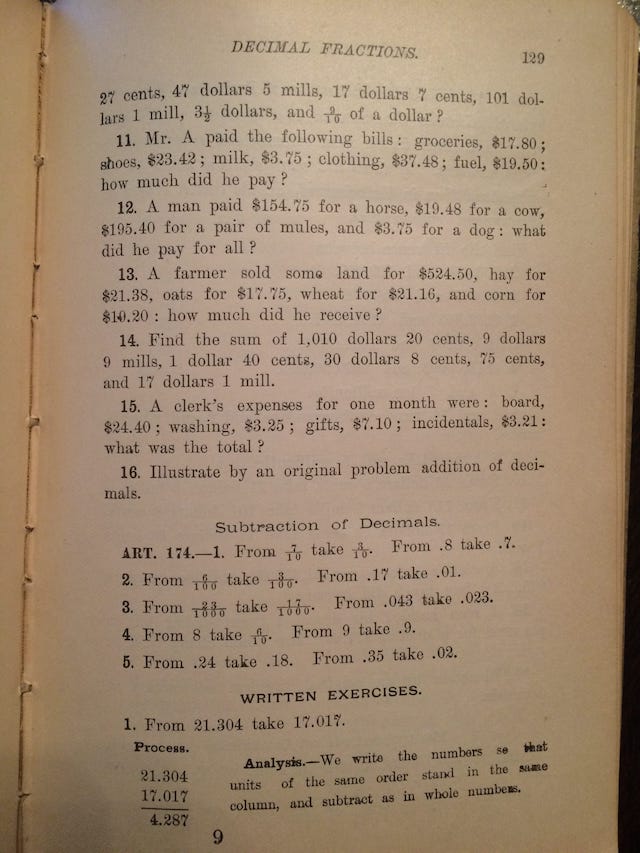
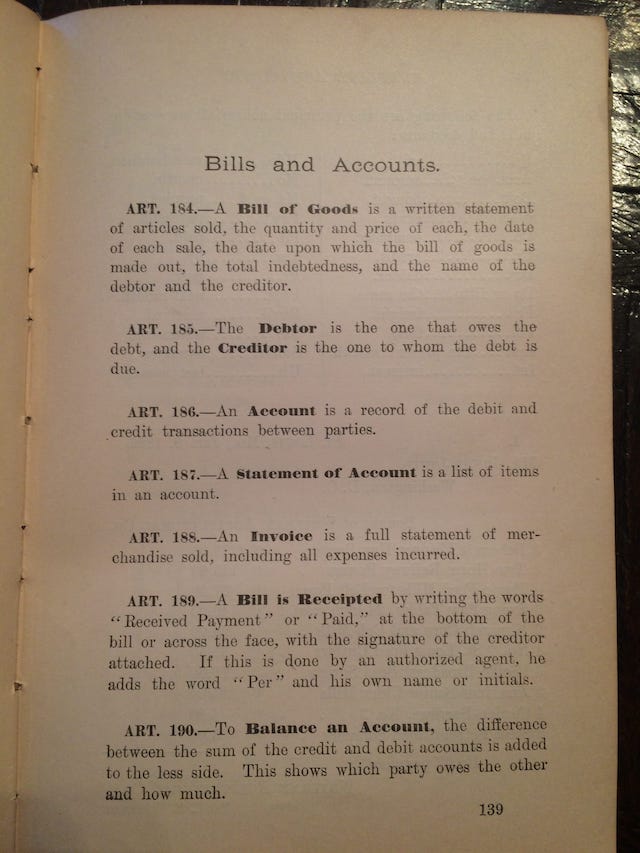
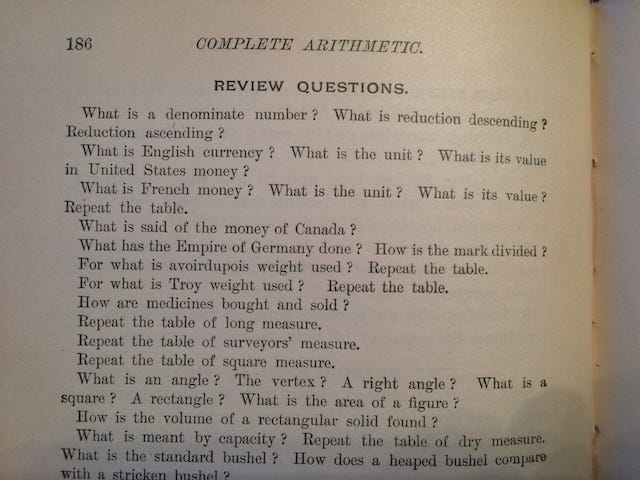
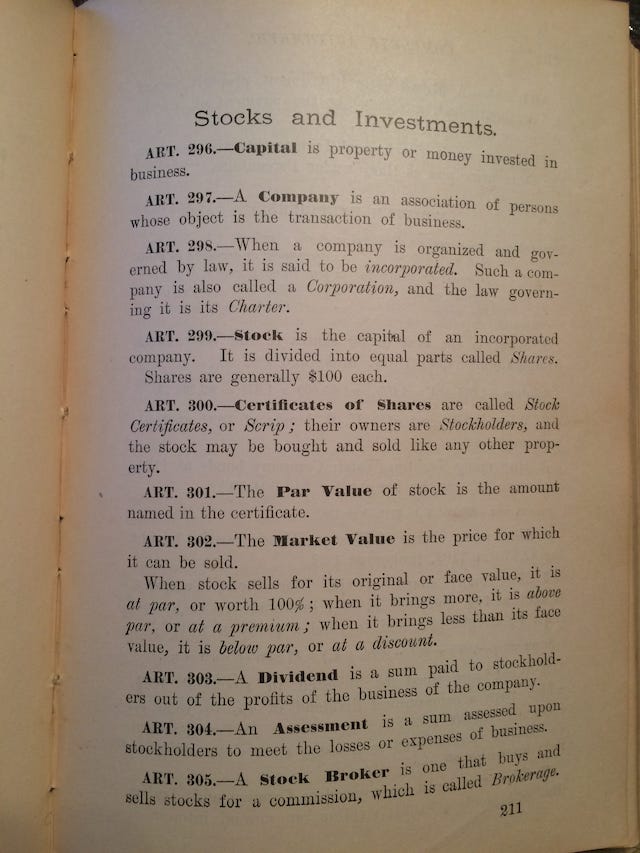

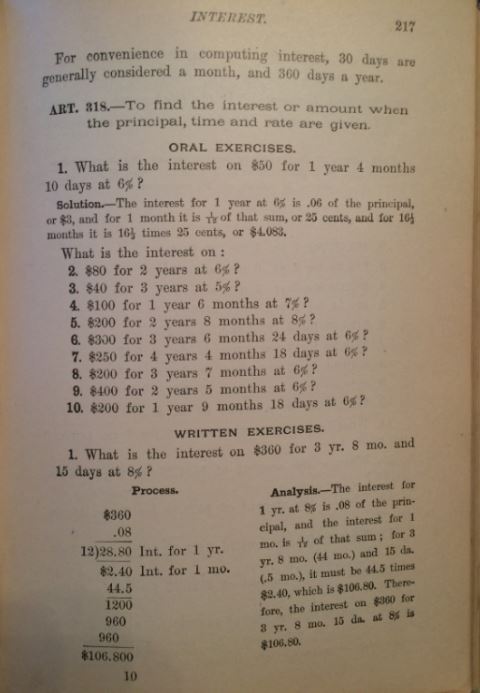
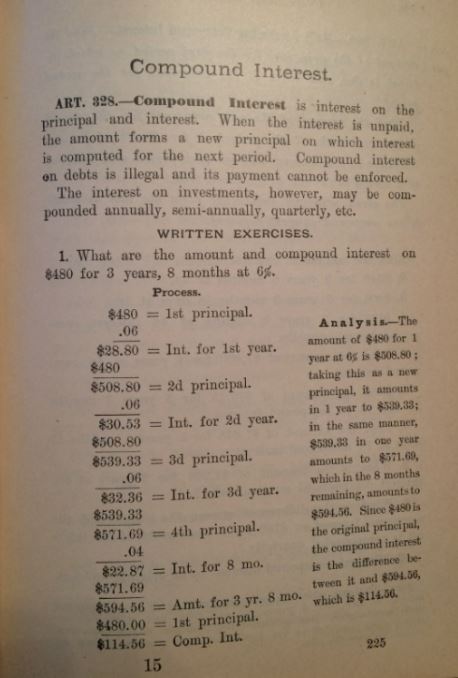 One wonders how many American students today would benefit from such an aggressive, yet useful course in mathematics. For those who want to go on to higher math, it seems that they would also have built a very strong foundation upon which to build.
One wonders how many American students today would benefit from such an aggressive, yet useful course in mathematics. For those who want to go on to higher math, it seems that they would also have built a very strong foundation upon which to build.
Written by Devin Foley for Intellectual TAKEOUT ~ February 12, 2016
